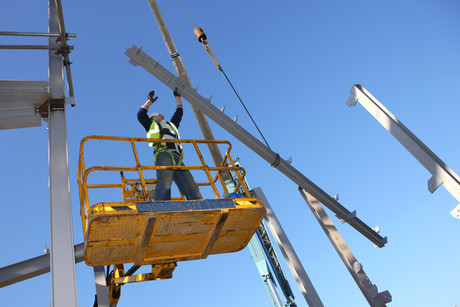WorkSafe targets falling objects risk

With five deaths and 721 injuries caused by falling objects at construction sites in the past five years, WorkSafe Victoria is making falling objects a focus of inspections in the coming weeks.
Falling objects are a leading cause of death and serious injury in the construction industry and pose a risk not just to workers, but to people in streets near worksites.
In January, serious incidents involving falling objects included one at Southbank, Melbourne, where a piece of timber fell 22 floors after it snapped in half while being lifted to a loading bay.
In another incident, a piece of MDF sheeting fell through an open window and 63 floors to the ground on Little Latrobe Street.
There was also an incident in which a tower crane dropped a concrete slab weighing about 11.5 tonnes at a construction site at Clayton.
No-one was injured in these incidents; however, in September last year, a 48-year-old man died and another worker was seriously injured after they were struck by a kibble full of concrete which fell from a crane at a Box Hill construction site.
Common causes for falling objects include gaps between safety screens or holes in safety netting, missing kick or toe boards on scaffolding, and debris or materials coming loose from plant while being lifted.
Unsecured items stored close to edges or exposed to high winds can also cause incidents involving falling objects.
WorkSafe Executive Director of Health and Safety Julie Nielsen said even a small object can cause serious injuries when falling from a great height.
“Loads being lifted through the air must also be properly secured, and as we saw last year, the consequences can be tragic when a crane drops its load and there are workers below,” she said.
“Risk control measures for falling objects are well known so there is no excuse for employers failing to implement them.”
WorkSafe states that employers and site duty holders must ensure they prevent falling objects by:
- eliminating the risk through off-site assembly of equipment that would otherwise be performed at an elevated edge;
- using containment systems or securing objects through substitution, isolation or engineering controls;
- using guardrail systems that incorporate mesh infill panels and kickboards;
- isolating the risk with barricades or fencing to create exclusion zones at ground level;
- implementing engineering controls such as perimeter safety screens, overhead protection gantries, enclosed perimeter scaffolding and restraining loose material;
- using administrative controls such as lines markings and signage to advise lanyard systems are to be used on tools, or to monitor the possibility of windy weather.
Fatal crane-load crushing lands $340K fine
In Victoria, a worker has been fatally crushed after a suspended load fell from a crane, leading...
Mobile plant, fixed machinery and vehicles compliance blitz
SafeWork NSW inspectors have issued more than 140 notices as part of a targeted mobile plant,...
Repeat forklift offender has fine more than doubled
In Victoria, a refrigerated transport and storage company has had a fine more than doubled to...










